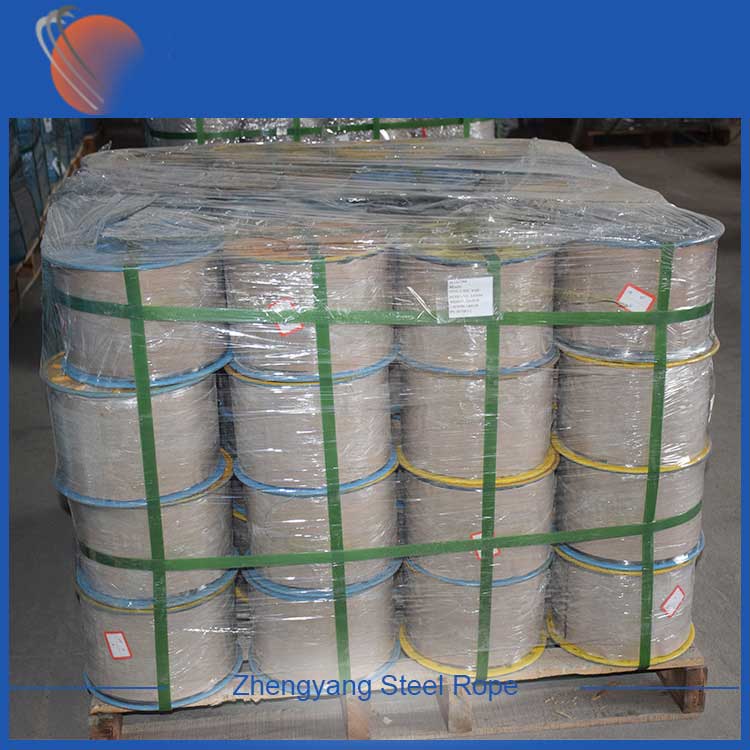Information about Steel Roping Wires
2024-07-28
Steel roping wires are high-strength steel wires designed for use in various applications that require durability and load-bearing capacity. They are commonly used in construction, mining, maritime, and industrial sectors for applications like lifting, towing, and anchoring. Here’s a detailed overview:
Key Features:
1. Material Composition:
- Steel Type: Typically made from high-carbon steel or alloy steel, which provides the necessary strength and toughness.
- Wire Construction: Often constructed with multiple strands of wire twisted together to form a rope, enhancing flexibility and strength.
2. Mechanical Properties:
- Strength: Known for high tensile strength, making them suitable for heavy-duty applications.
- Flexibility: Designed to be flexible while maintaining high load-bearing capacity, allowing them to bend around pulleys and sheaves without damage.
3. Coatings and Treatments:
- Galvanization: Many steel roping wires are coated with zinc (galvanized) to prevent corrosion and extend their lifespan.
- Lubrication: Often lubricated to reduce friction, improve performance, and prevent wear and tear.
Applications:
1. Construction:
- Cranes and Hoists: Used in cranes and hoists for lifting heavy loads, including steel beams, concrete, and machinery.
- Elevators: Employed in elevator systems to support and move the elevator car.
2. Mining:
- Hoisting: Utilized for hoisting and transporting materials from mines, including ore and waste rock.
- Mining Equipment: Used in various mining equipment for moving and securing components.
3. Maritime:
- Anchoring: Used for anchoring ships and offshore structures due to their strength and resistance to harsh marine conditions.
- Towing: Employed in towing applications for ships and barges.
4. Industrial:
- Pulling and Tensioning: Applied in industrial processes for pulling and tensioning materials and equipment.
Types:
1. 6x19 Construction:
- Strand Arrangement: Contains 6 strands with 19 wires per strand. Provides a balance of flexibility and strength.
- Applications: Suitable for general lifting and hauling applications.
2. 6x37 Construction:
- Strand Arrangement: Contains 6 strands with 37 wires per strand. Offers greater flexibility and higher resistance to abrasion.
- Applications: Ideal for applications requiring high flexibility and durability, such as cranes and elevators.
3. Wire Rope with Independent Wire Rope Core (IWRC):
- Core Type: Features an independent wire rope core within the rope, providing additional strength and flexibility.
- Applications: Used in demanding applications where extra strength and durability are required.
4. Wire Rope with Fiber Core:
- Core Type: Contains a fiber core for additional flexibility and cushioning.
- Applications: Suitable for applications where flexibility and shock absorption are important.
Benefits:
1. High Strength: Capable of supporting heavy loads and enduring significant tension.
2. Durability: Resistant to wear and tear, with coatings and treatments to enhance resistance to corrosion and abrasion.
3. Flexibility: Designed to be flexible while maintaining strength, allowing for smooth operation around pulleys and sheaves.
4. Versatility: Suitable for a wide range of applications across different industries.
Maintenance:
1. Inspection:
- Visual Inspection: Regularly inspect for signs of wear, corrosion, and damage. Check for broken wires or fraying.
- Functional Testing: Test the rope’s performance under load to ensure it is functioning correctly.
2. Cleaning:
- Removal of Debris: Clean the rope to remove debris, dirt, and other contaminants that may cause wear or damage.
3. Lubrication:
- Regular Lubrication: Apply lubrication to reduce friction and prevent rust. Follow manufacturer recommendations for lubrication intervals and types.
4. Storage:
- Proper Storage: Store ropes in a dry, clean environment to prevent corrosion and damage. Avoid storing ropes in conditions that expose them to excessive moisture or chemicals.
Selection Considerations:
1. Load Requirements: Choose a rope with the appropriate strength to handle the expected load and tension in your application.
2. Environmental Conditions: Consider the environment in which the rope will be used, including factors like exposure to moisture, chemicals, and extreme temperatures.
3. Flexibility and Bend Radius: Ensure the rope’s flexibility and minimum bend radius are suitable for your application’s pulleys and sheaves.
4. Maintenance Requirements: Consider how easy the rope will be to maintain and inspect, and whether it requires special coatings or lubrication.
Steel roping wires are essential for many heavy-duty and high-strength applications. By considering the specific requirements of your application and selecting the appropriate type of steel rope, you can ensure optimal performance and safety.



